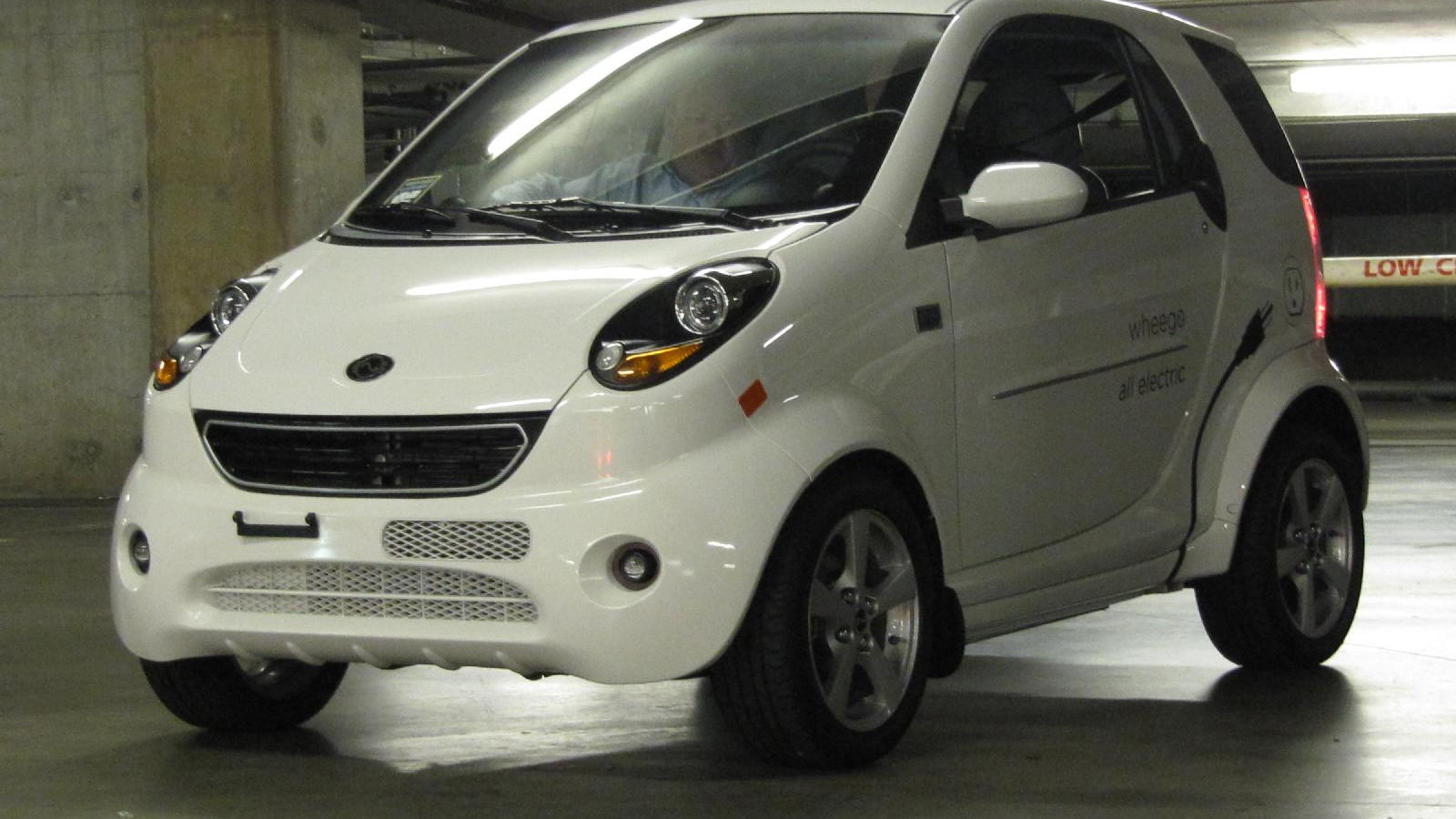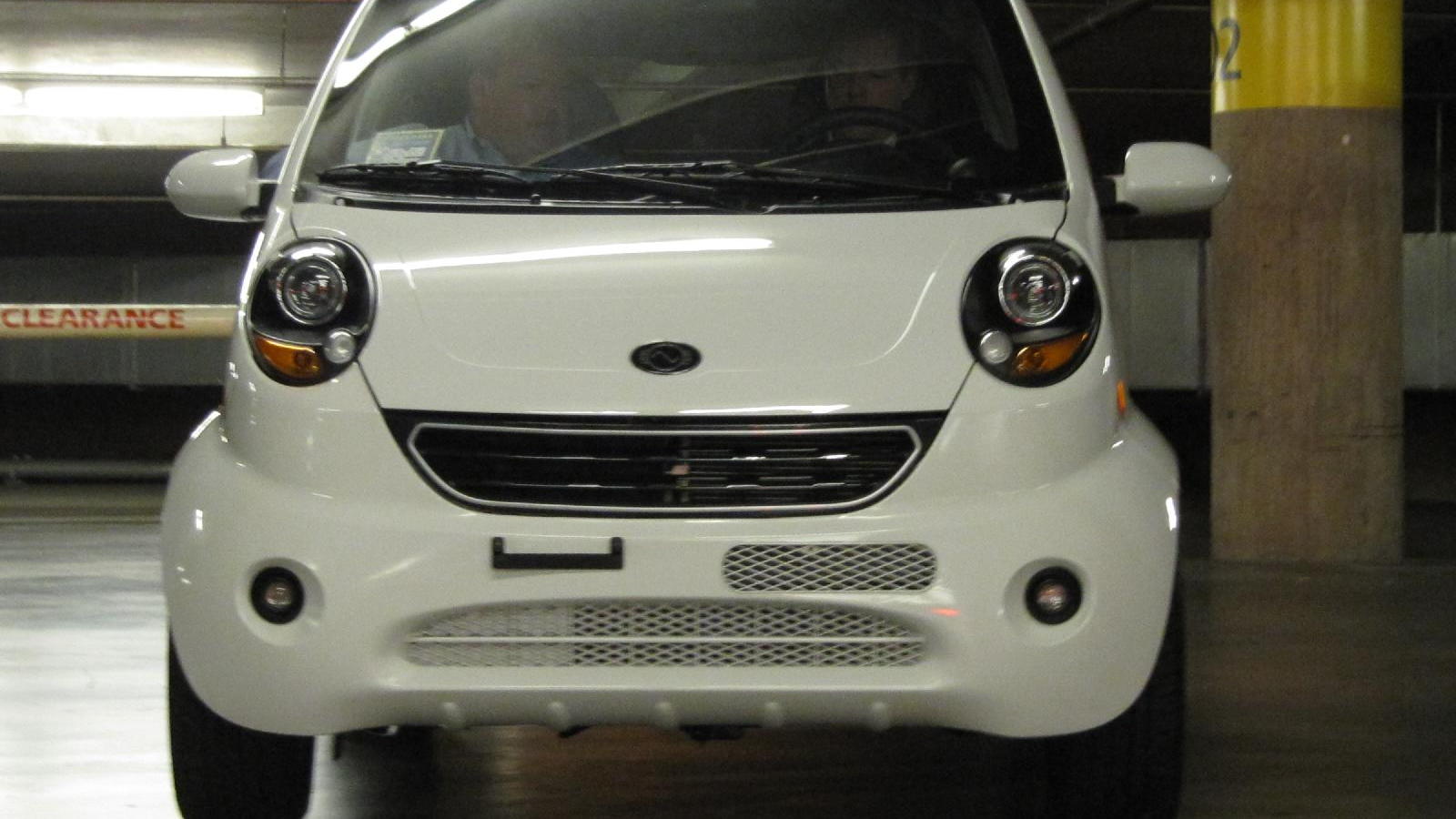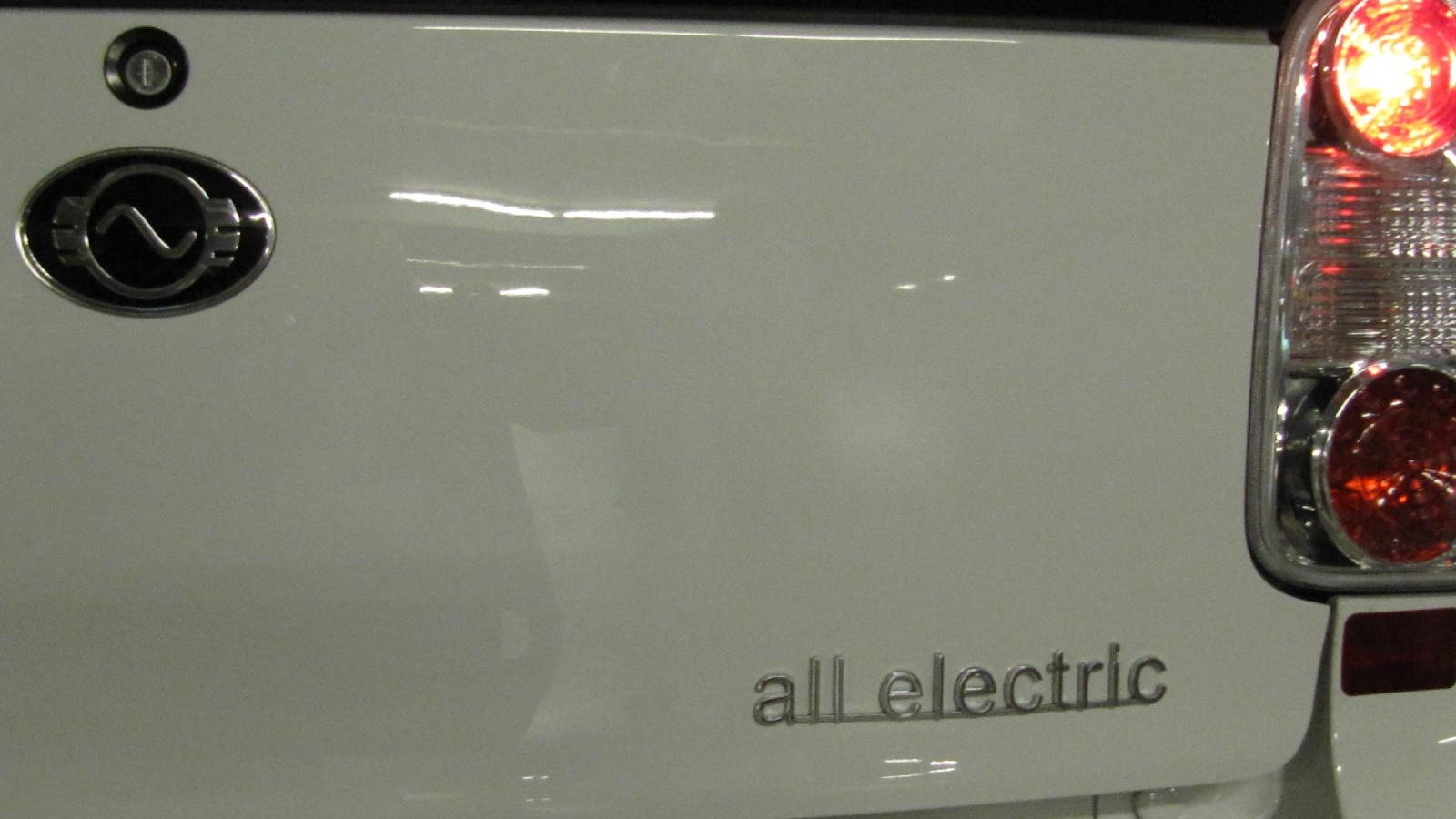The 2011 Wheego Whip LiFe is a small, two-seat electric car from a startup company you've never heard of with an unusual name.
It doesn't have the fit, finish, or driving quality of a 2011 Nissan Leaf or the Japanese-market Mitsubishi "i" we tested two years ago. And it's only got two seats, which condemns it to a tiny sliver of the U.S. new-car market.
In other words, it faces some pretty long odds in getting a foothold in the brutally competitive U.S. new-car market. Especially with a list price of $32,995, which makes it $215 more expensive than the five-seat, five-door Leaf.
Beating Nissan to market?
Wheego says it will be first to bring an electric car onto the market and into dealerships, beating Nissan--which will only deliver five Leaf electric cars in December--by a few weeks. The company is now awaiting formal approval from the EPA to sell the Whip LiFe, which it says it expects to receive by the time its cars ship to dealers next month.
According to president Jeff Boyd, the genesis of the car--and the Atlanta-based company--was its founders' search for an inexpensive vehicle that could provide "gliders," or donor bodies to be fitted with electric powertrains in the U.S.
The Chinese company that makes the Noble on which the Wheego is based, Shuanghuan Automobile, got permission from the Chinese government to build an economical two-seater urban car. Some might call it a knockoff of the Smart ForTwo, although the Wheego is larger in every dimension.
Unfortunately, newly affluent middle-class Chinese car buyers had little interest in fuel economy. Instead, they bought the largest, most opulent vehicles they could afford, especially those carrying prestigious Western brands. The Noble languished until Wheego came calling.
Over the last year, the company has sold a few hundred Wheego Whip low-speed neighborhood electric vehicles, or NEVs, fitted with lead-acid batteries. NEVs are restricted to a top speed of 30 mph, but must meet far fewer regulations to be sold for local and off-street use (regulations for where they can be used vary by city and state).
U.S.-built lithium-ion batteries
Now Wheego is on the verge of launching the 2011 Wheego Whip LiFE, the suffix standing for the lithium-iron-phosphate cells in the 30-kilowatt-hour battery pack that replaces the lead-acid batteries. The result is a highway-capable vehicle expected to pass all NHTSA equipment and crash testing, so it can be licensed anywhere.
While the lithium-ion cells are sourced in China, Boyd says, the battery pack is assembled in Vista, Cailfornia, by Flux Power. The vehicle uses fully 90 percent of its 30 kWh, a more aggressive state-of-charge range than either the Nissan Leaf or Chevrolet Volt.
Like the Nissan Leaf, but unlike the Chevrolet Volt, the Whip LiFe uses airflow to cool its battery pack. Boyd said liquid cooling would be "extraneous" in the 2600-pound vehicle.
The drive motor is a 45-kilowatt (60-horsepower) unit, and the 2011 Wheego Whip LiFe is fitted with four-wheel anti-lock disc brakes, a tire-pressure monitoring system, and other mandatory safety gear.
Small, primitive, and cheap
Boyd stressed that the vehicle we drove was a pre-production model, with final tweaks to the suspension, control software for performance, and braking feel still underway. Final performance figures will be released December 10, he promised.
Nonetheless, the Wheego Whip LiFe is not a particularly pleasant car to drive. The doors shut with a tinny bang, and without an adjustable steering column, the bottom of the small square digital screen that displays a virtual instrument cluster was blocked by the steering wheel, even with the driver's seat raised as high as it would go.

2011 Wheego Whip LiFe at 2010 Los Angeles Auto Show
Three drive modes--Drive, Sport, and Economy--give more or less power for given acceleration. Boyd says range is 90 to 95 miles in Drive, up to 80 miles in Sport, and 100 or more in Economy mode. Top speed is quoted at 70 mph, though on our 15-minute urban run, we had no chance to test that limit.
We were able to spin an inside wheel accelerating out of a corner in Sport mode, but the acceleration wasn't particularly brisk right from standstill, which is peculiar for an electric car--especially given the brisk 0-to-30-mph behavior of larger electric cars like the Leaf and Volt.
The centering action of the numb electric steering was inconsistent, with pronounced torque steer when accelerating on curves. For a relatively light car, the controls felt heavy, although the car rode smoothly considering its very short wheelbase. We experienced slightly crashing into ruts and holes on LA's not-very-well-maintained roads.
Finally, the electric motor whine was as loud as anything we've heard in the dozen or so electric cars we've driven. Boyd called that a deliberate choice: "Our customers told us they didn't want a silent car, they wanted to know something was happening." We're not convinced.
In other words, it doesn't appear the car has evolved significantly since our sister site TheCarConnection tested a 2009 Wheego Whip NEV last year. And it's clearly not as refined as the vehicle most similar to it offered in the U.S. market, the limited-volume 2011 Smart Electric Drive, a factory electric conversion of the Smart ForTwo.
Dealers front and center
Unlike Coda, another electric-car startup that uses Chinese gliders with final assembly in the U.S., Wheego believes firmly in the traditional model of distribution through U.S. dealers. That may not be surprising, since company president Boyd was previously a dealer himself.
Boyd expounded at length on the superiority of the dealer model in bringing local credibility to new brands, and for giving customers a local focus for any service or handholding needs. Thus far, Boyd says, Wheego has 35 dealers in 15 states signed up, with a goal of only 100 to 120--giving each dealer a wide sales area.
Dealer handholding may be needed for potential fleet buyers, including Federal and state governments. With 73 percent U.S. content by bill-of-materials cost, Boyd says the Whip LiFe will be eligible for listing on the U.S. General Services Administration (GSA) list of U.S.-built vehicles--the starting point for many arms of government.
Thus far, Wheego has assembled roughly 100 vehicles, which are being tested and used as demonstrators. It will ramp up to 500 cars per month in December, January, and February. Once its Ohio plant is fully up and running in March, Boyd says, it will be able to build up to 5,000 Wheegos a month if demand warrants.
The $5.5 million car companyAccording to Boyd, Wheego has thus far been funded at approximately $5.5 million. The company is now attempting to raise another $15 milion.
Nonetheless, Boyd says a four-door crossover and a four-door midsize pickup truck are also under development. CEO Mike McQuary said at Wheego's 2010 Los Angeles Auto Show press conference that the next two vehicles were a five-passenger car (coming late in 2011), and a compact pickup derivative early the next year.
Finally, about that name. It comes, says Wheego, from the combination of the fun-to-drive characteristics of the car ("Whee!") and its ability to let you GO gas-free.
It was also one of the few domain names the company could find that was available--and even then, the Wheego Electric Cars website uses a "dot-net" suffix. The other Wheego site, the dot-com, is a children's game "where treasure hunting meets hide'n'go seek."
More cynical journalists might well be tempted to turn that in to a metaphor for Wheego, and its quixotic quest for a permanent toehold in the evolving electric-vehicle market.


















